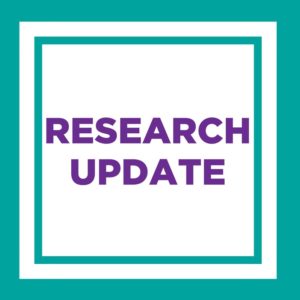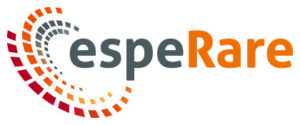I am excited to share with you the latest news in our journey to develop a treatment for x-linked hypohidrotic ectodermal dysplasia (XLHED). EspeRare, a not-for-profit drug developer based in Switzerland, is picking up where Edimer Pharmaceuticals left off! EspeRare is exploring the possibility of re-launching the development of ER-004 (formerly known as EDI200) as a treatment for babies affected by XLHED. They are looking to start a phase II clinical study where ER-004 would be administered to babies “in utero”.
This is incredible news for all of us! However, this relaunch is still at an early stage. EspeRare is conducting a study to ensure that its plan is feasible and suited to our community’s needs. At this point, the main hurdles to overcome are developing both a regulatory and funding plan to take this project forward.
We are working closely with EspeRare during this key phase and doing all we can to help make it a success. We are thrilled with this development but understand it’s early in the process!
What is ER004?
ER004, is a synthetic form of Ectodysplasin A (EDA), the protein missing in XLHED during development. Through the years, you have heard us call it APO200 when Apoxis was developing it, then EDI200 when Edimer was involved and now it’s called ER-004. It is the first and only therapy developed for XLHED. This is cutting edge research and a highly innovative therapy.

Edimer’s first study successfully demonstrated the therapy to be well tolerated. In their follow-up study, the XLHED Newborn Clinical Trial, the treatment did not correct the XLHED symptoms in the newborn boys who received it, as we had hoped. At that point, Edimer stopped the development and closed its operations. All of us in the ectodermal dysplasias community were disheartened by the setback. But not for long.

Last December, we shared the promising news that Prof. Holm Schneider in Germany had treated three babies prenatally with ER-004. It’s still early to fully understand how well the treatment has worked. However, to date, the babies are able to sweat normally and have not had any respiratory-linked hospitalizations. They may have other positive outcomes yet to be assessed. Prof. Holm Schneider will share these results at the Family Conference in July. Isn’t that amazing! It looks like giving the replacement protein during pregnancy versus to newborn appears to markedly improve its effectiveness.
Ectodermal dysplasia can cause a lifetime of challenges. By supporting research, you expand early diagnostics, treatments, pathways toward cures… and hope!Shape Our Futures With Research
EspeRare’s Plan
EspeRare plans to build on Prof. Schneider’s early success and administer ER-004 in utero to boys affected by XLHED in a clinical trial to assess if this therapy works. First, EspeRare has started a dialogue with the regulatory authorities to understand if they will allow this ground-breaking clinical trial. If the regulatory path and funding are secured, then the trial could start in 2018 in the European Union (EU) with Prof. Schneider as principal investigator. They plan to expand the study to the United States after interim positive results.
The primary objective of this trial is to assess ER-004’s ability to restore the babies’ ability to sweat. ER-004 would be administered through two injections a few weeks apart during the third trimester of pregnancy. This means that this could be a single course of treatment that could have life-long effects – if successful!

The Players
While EspeRare is new to the world of XLHED research, they are talking and working with people and organizations like the NFED. EspeRare has been working with Neil Kirby, former Edimer CEO, on transitioning this project. They have identified Prof. Schneider, who was a part of the XLHED Newborn Clinical Trial and treated the three babies, to be the principal investigator. Also on board is Pascal Schneider, who was one of the researchers who engineered ER-004 (called APO200 at the time) in the lab with NFED funding!
But, First Things First
EspeRare needs to understand if the XLHED community is interested in such a therapy. This is where you come in. Soon, we will ask families affected by XLHED to complete a survey for EspeRare. Watch for those details to be coming very soon! We will need you to act quickly.
We hope you share our renewed hope in creating a treatment for our families with XLHED. We still have a long way to go and a lot of work to do. We are committed to advancing this important work and hope you are, too.
Onward!
Together, we can make this happen!


This is fantastic news. What about the other forms?
Hi, Lisa. This project only focuses on the x-linked form of hypohidrotic ectodermal dysplasia (HED). The other forms of HED are caused by other genes. We are hopeful that one day we will have some kind of treatments for those forms, too. ~ Jodi, NFED
Hi this is great news!!!! What about this twin teeth?? Did they develop already any?
Hi, Bettina. Dr. Schneider will be presenting an update at the Family Conference on July 22nd. We look forward to hearing what he has to say about the twin’s teeth at that time! Stay tuned. ~ Jodi, NFED
Is there funding potential from the 21st Century Cures Act? If not, maybe there is potential funding for the more life threatening forms of ED where there is significantly more pain, grief and suffering. Back more-so to the topic of the article. This is excellent news. For the EU and the rest of the World, this will help boost confidence for those affected to be able to breed and provide the financial incentive to have a marketable versus bio-equivalent option… of which I have not read where bio-equivalent (i.e. extract of EDA from donor then transfused) options have been tested as they seem feasible to me. However, most communities do not have specialized treatment centers for bio-equivalent options other than blood transfusions and organ transplants so a commercial marketable treatment would be beneficial for more main stream operations accessibility. With sweating being the primary condition to impact, I wonder what the trimester for vectoring in the EDA will impact hair development. This seems to be an interesting topic Pascal was working on in another research project if I recall correctly… prenatal hair growth treatment. So, first the dental and thermal exchange genetic condition correction and then seems hair treatment then hair treatment regionally would be value added for some communities that worry about that stuff. Maybe oppositely, even antagonist or blockers for the hairiest breeds could have a marketable potential. First things first… impacting the inability to sweat and develop teeth.
This brings tears of joy and HOPE for my grandchildren and so many families! Thank you! Thank you! Thank you! Can’t wait to learn more!
After my son was born n I came to know he was having this issue of sweat hair n teeth….I was so sad n then I realised how important it is to be a ‘normal’ healthy person…
It’s realy a ray of hope for us if next generation is treated to live a normal life……Thank you so so so much doctors n there whole team for giving us hope
Let us know how we can help. We participated in some of first round studies and are ready for the next. It will take all of us and this is so exciting for our children.
Hi, Kristina. Thrilled to hear you want to help! We will be asking all families affected by XHLED to complete a survey in the coming weeks for EspeRare. So, be on the lookout for that. You are also right in that it will take all of us. The NFED started the research for XLHED back in the late 80s. Families have been a driving force at every step in the journey. Together, we will do this! – Jodi, Director, Marketing and Communications, NFED
Everything is very open with a clear description of the issues.
It was really informative. Your site is useful. Thanks for sharing!
I wanted to check in on this. Are there any specific steps are surveys that are needed?
Hi, Kristina. Thanks for checking in! We will have an update for you soon, outlining what is needed. We don’t have anything yet at this time to share. We appreciate your willingness to help! Stay tuned. ~ Jodi, Director, Marketing and Communications, NFED
Hi again. Checking in again=) I want to make sure I’m not missing any action items (survey etc.). Thank you.
Hi, Kristina. Thanks for checking in! We appreciate your desire to stay on top of things. We do not have any action steps for you to take at this time. We continue to stay in touch with EspeRare. They are still working hard on this project but do not have any updates or calls to action at this time. We will share with you and our community any news as soon as we are able. We share your excitement! Thanks again.
– Jodi, NFED Director, Marketing and Communications
We would like to receive information regarding the up coming treatments for x-linked sweat issues…my grandson had a 108 degree temp when he was 4 months old due to this condition but luckily had no irreversible effects of the fever.
Hi, Connie. I’m so sorry to hear about your grandson’s high temperature. So glad it didn’t lead to further issues. Any updates on the XLHED research would be on our website at https://nfed.org/research/research-studies/x-linked-hypohidrotic-ectodermal-dysplasia-studies/. Also, we send out updates via any time that we have them. Have you joined the NFED? That’s the best way to learn of any news or research updates on x-linked hypohidrotic ectodermal dysplasia. If you have not, you can join here: https://nfed.org/join-us/. Besides getting email alerts when you join, we have lots of information and support that we can offer you. Hope this is helpful to you! Jodi, NFED, Director, Marketing and Communications
Hi Jodi,
That’s a great news about the potential of having a drug to cure XLHED. Is there any new update on this research? Just so excited to know more!
I understand that these trials are done on new born babies at the moment but if there is any need of adult participation in the trial then I will happily enroll myself for the trial.
Thank you and awaiting your response!
– Vinesh
Hi, Vinesh. We hope to have an update for you in the next few weeks. Stay tuned! Thank you for your offer to participate in a trial if needed. Any time we have research opportunities for people to volunteer for, we will post them on our website, on Facebook and send out emails. The best thing is to make sure we always have your most current email address. Thanks!
How do you know if you have the xlined or other? I suffer from Clouston Syndrome and my mother also has it? I wondered if there has been any research on alternative mediction that may provide some type of protein supplements to help Clouston Syndrome. The teeth and sweat glands appear to be normal.
Hi, Julie. This article is about x-linked hypohidrotic ectodermal dysplasia. Clouston syndrome is a completely different form of ectodermal dysplasia. Unlike HED, Clouston syndrome is inherited as an autosomal dominant condition, meaning there’s a 50% chance of the condition being passed from parent to child. You can learn more about inheritance here: https://nfed.org/learn/genetics-inheritance/ and you can learn more about Clouston syndrome here: https://nfed.org/learn/types/clouston-syndrome/. We are not aware of any research on alternative medications for Clouston. And, yes, you are correct in that the teeth and sweat glands in Clouston are not affected.~ Jodi, NFED, Director, Marketing and Communications
Is there any treatment for children?
Many of the symptoms related to ectodermal dysplasias can be treated. The research discussed is an in-utero treatment. The treatment is received during the pregnancy. Please contact our office at info@nfed.org with additional questions. Thank you.